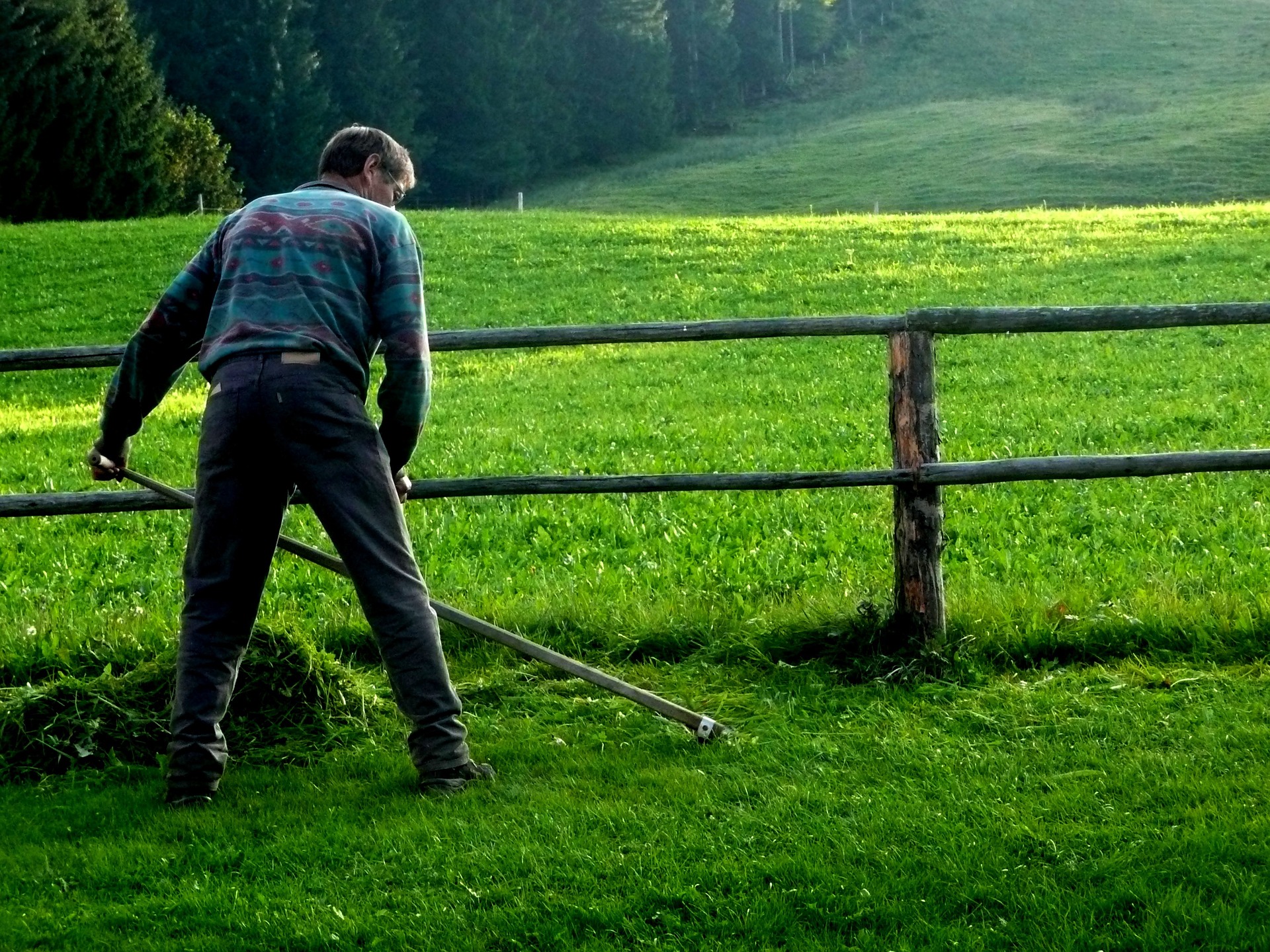Friends, the scythe is my new favorite tool.
The scythe, used for centuries, consists of a snath, grips, ring and blade. The curved blade attaches via the ring to the bottom end of the snath, which may be curved or straight. One grip sits at the top end of the snath and another protrudes from the upper middle section.
The scyther (yours truly) holds the grips and swings the scythe back and forth in a semicircle to cut grass, grain or other growing matter. Some blades can cut through saplings, brambles and more.
The scythe became an important tool as making and storing hay for livestock came to be a vital part of agriculture, according to the Britannica.
Another article I read suggested the continental-style scythe originated in Austria during the Ottoman era. Industrialization eventually replaced the European-wide scythe-making craft. However, companies in Austria still make scythe blades.
The other popular scythe style, made with a different forging technique as I understand it, spread to the U.S. from the UK.
I grew up with a scythe in the family’s garden tools. But nobody used it much. I liked the idea and tried it out occasionally, but it is heavy and doesn’t cut all that well, so I always gave up quickly. Turns out it is the American-style scythe — heavy and more curved.
A year or two ago my sister bought a European-style scythe and liked it. It is light and easy to use. I recently got my own.
I learned the length of the snath is very important — it should be made to fit the user’s specific body, or the tool will be less effective and harder to use.
I measured my height, ground to hip and elbow to fingertip. Using these measurements I ordered a snath, ditch blade, ring, whetstone and whetstone holder from Scythe Supply. The company, based in Maine, makes snaths of a combination of white ash, maple and birch. Altogether my scythe and accessories cost around $200.
The blade, made in Austria by Schroeckenfux, forging scythe blades since 1540, is curved in three dimensions. While in use the blade should be honed with the whetstone often, and after significant use the blade should be peened — hammered to thin the edge.
I haven’t used my scythe a lot yet; I need to practice and perfect my technique. The basic idea is to hold the scythe with arms slightly bent such that the blade hovers just above the ground and swing it by rotating my torso in a semicircle back and forth as I shuffle forward. If I do it correctly, as I cut, I should be tossing the cut grass into a row for easy raking.
I’m enthusiastic about this tool for several reasons. First, so far I find using it enjoyable — physical and productive work that isn’t grueling. Second, it allows more control than a lawnmower. The scythe works well on uneven ground and close to trees and under fences.
Also important to me is reducing the use of gasoline in the care of my property. Some use is probably inevitable, but every gallon I reduce is a win.




